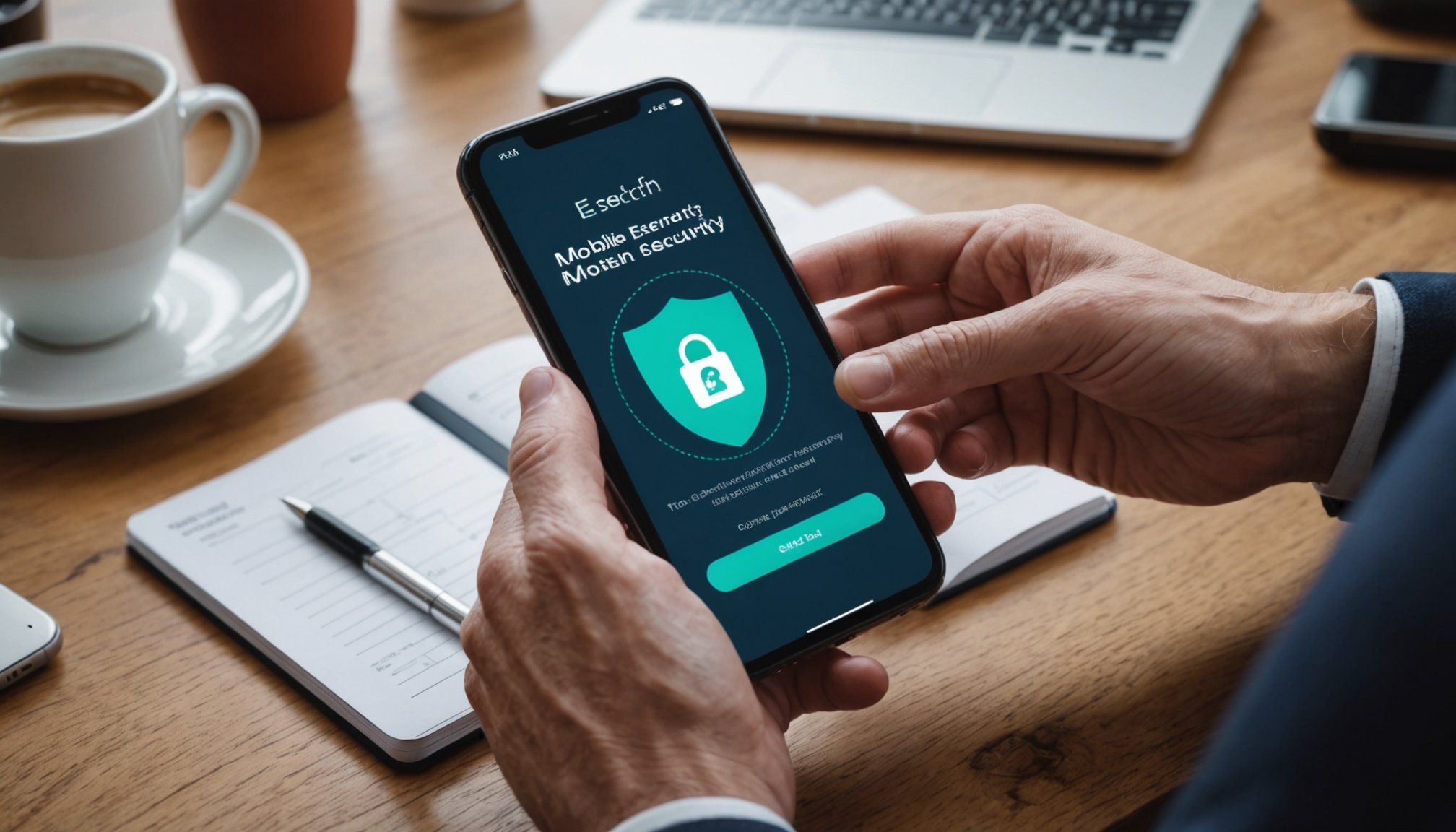Overview of Mobile App Security in Fintech
The fintech industry, renowned for innovation and convenience, faces formidable mobile app security challenges. Mobile app security is not merely a technical detail—it’s a necessity to protect sensitive financial information. Fintech security is paramount as vulnerabilities can lead to severe financial and reputational damage.
The importance of mobile app security in fintech cannot be overstated. Financial organizations are increasingly reliant on mobile interactions, making them prime targets for cyber-attacks. The loss of user trust and potential financial repercussions from breaches can devastate organizations. Ensuring robust mobile app security can safeguard user data, maintain trust, and uphold the integrity of financial services.
In parallel : Unlocking Social Media Insights: Revolutionizing Political Campaign Strategies in the UK
Current security challenges in fintech include safeguarding data from malware, preventing unauthorized access, and protecting against evolving threats. As the industry grows, so do the methods cybercriminals employ, requiring fintech companies to stay ahead with vigilant security measures.
Security breaches profoundly impact financial organizations, often resulting in financial loss, legal ramifications, and damage to brand reputation. An organization’s ability to proactively manage these risks through effective fintech security strategies is crucial. As innovations in fintech continue, prioritizing mobile app security ensures sustainable growth and resilience against cyber threats.
This might interest you : Transforming UK IT Customer Support: Must-Know AI Innovations for Success
Regulatory Compliance in the UK Fintech Landscape
Navigating regulatory compliance is critical in the UK fintech sector. Key regulations like the General Data Protection Regulation (GDPR) and the Payment Services Directive 2 (PSD2) significantly impact fintech mobile apps. These regulations ensure data protection and secure payment processes, essential for maintaining user trust and legal adherence.
Adopting best practices is crucial for fintech enterprises to ensure compliance. This involves regular audits, implementing robust security measures, and staying updated with changes in fintech regulations. Compliance teams should engage in continuous monitoring and updating of security protocols to align with evolving regulations, ensuring that their practices fulfill all legal requirements.
Non-compliance can have severe consequences for fintech businesses. Potential penalties include substantial fines and legal actions, simultaneously jeopardizing company reputation and consumer trust. For instance, failure to adhere to GDPR can result in fines up to €20 million or 4% of global annual turnover, whichever is higher. Thus, compliance is not just a legal requirement but a component of successful business operations in fintech.
Fintech companies must, therefore, integrate compliance into their development lifecycles. This integration ensures seamless adherence to regulations and reinforces the ethical and secure handling of sensitive financial data. Proactive compliance strategies offer competitive advantages, safeguarding both business interests and customer data.
Essential Tactics for Enhancing Mobile App Security
Improving security tactics in fintech mobile apps requires a multifaceted approach, addressing varied aspects of protection.
Data Encryption Techniques
Data encryption is crucial for keeping user information safe as it converts sensitive data into unreadable text, only decipherable with authorized keys. This technique ensures even if data is intercepted, it remains inaccessible to unauthorised parties. Emphasizing encryption bolsters mobile app security, creating a robust barrier against breaches.
User Authentication Strategies
Employing advanced user authentication strategies enhances protection, verifying user identity before granting access. Techniques include biometric authentication, like fingerprint or facial recognition, and multifactor authentication, which may combine passwords with security tokens. Each method adds layers of protection against unauthorized access, reinforcing mobile app protection.
Secure Code Practices
Adopting secure code practices prevents exploitation of vulnerabilities in the app’s codebase. Techniques such as code obfuscation obscure the app’s logic, making it harder for attackers to understand and manipulate. Regular security audits and updates are crucial for identifying and rectifying possible weaknesses, maintaining high standards of mobile app security.
These essential strategies form the backbone of a comprehensive mobile app security framework, crucial in the fintech industry, where safeguarding user data is of paramount importance. Implementing them effectively reduces the risk of breaches and enhances overall security resilience.
Risk Assessment and Management Frameworks
In the dynamic world of fintech, continuous risk management is vital for safeguarding mobile app security. Employing robust frameworks allows organizations to effectively identify and mitigate potential security threats. By regularly assessing risks, fintech companies can adapt to evolving challenges, ensuring their security measures remain effective and up-to-date.
Frameworks like the NIST Cybersecurity Framework or ISO/IEC 27001 provide a structured approach to risk assessment. They help organizations pinpoint vulnerabilities, evaluate their potential impact, and establish strategies for preemptive action. Such comprehensive assessments ensure that fintech applications maintain integrity and resilience against cyber threats.
A vital element of these frameworks is consistent monitoring. Continuous risk assessment enables swift reactions to any new vulnerabilities or threats on the horizon. This proactive stance not only protects sensitive data but also fortifies user trust and app security.
Examining case studies of risk management successes reveals the advantages of integrating these frameworks. They showcase how methodical approaches to potential threats have saved companies from major breaches. Learning from these successes and failures can provide invaluable insights for other fintech enterprises aiming to enhance their security posture. Embracing rigorous frameworks and assessments as a normal part of operations ensures a fortified defense against cyber threats.
Implementation of Security Tools and Technologies
To fortify mobile app security in fintech, leveraging advanced security tools is crucial. These tools provide automated security measures that ensure robust protection. For example, tools like SonarQube or Checkmarx can effectively scan codebases, identifying vulnerabilities and weak points that could be exploited. Such proactive measures help maintain the integrity of fintech applications.
Integrating automated security testing tools within the development lifecycle is highly beneficial. Continuous integration with tools like Jenkins allows for regular security checks, detecting threats early in the development process. This approach minimizes risks, ensuring any potential security issues are addressed promptly and effectively.
Employing innovative fintech technologies such as artificial intelligence and machine learning further enhances security. These technologies can predict potential threats, analyze patterns, and automate threat detection processes, making them invaluable in safeguarding financial data.
When incorporating these technologies, it is essential to ensure they are seamlessly integrated into the development lifecycle. This ensures security is maintained throughout the process, from initial development through to deployment. Leveraging these tools and technologies not only enhances security but also helps build trust with users by safeguarding sensitive financial data.
Building a Security-Conscious Culture within Fintech Enterprises
Fostering a strong security culture in fintech enterprises is critical in safeguarding sensitive financial data. A robust culture of awareness ensures that employees understand the importance of maintaining stringent security protocols, keeping cybersecurity threats at bay.
Emphasising comprehensive employee training programs is a crucial step. These programs should cover essential security practices, current threat landscape, and how employees can contribute to mitigating risks. Regular workshops, seminars, and e-learning modules offer refreshing ways to engage staff and ensure their knowledge is up-to-date.
Proactive security measures can include encouraging a shared sense of responsibility. Developing strategies where teams actively participate in identifying potential vulnerabilities fosters a security-focused mindset. Incentives and recognition for identifying risks or demonstrating excellent security practices further reinforce these measures.
Implementing resources such as security newsletters, alerts, or internal forums can help keep security front-of-mind. These tools offer continuous learning opportunities and provide a platform for discussing new threats and solutions.
Overall, ingraining a security-first approach requires commitment through regular training, empowering employees, and creating an environment where security is prioritised across all levels of the organisation. This cultural shift not only protects against breaches but also builds trust with clients and stakeholders.
Case Studies: Successful Implementation of Security Strategies
In analysing case studies within fintech, we discover dynamic approaches to enhancing mobile app security. One such example involves a European fintech startup that faced escalating cyber threats targeting user-sensitive data. By implementing multifactor authentication and bolstering encryption protocols, the company significantly mitigated risks associated with unauthorized access.
A major US-based financial service provider faced a different challenge: preventing data breaches during transactions. Their solution lay in leveraging machine learning algorithms to predict and identify fraudulent activities in real-time, effectively safeguarding user data without hindering transaction speeds. This proactive step not only protected their clients but also maintained trust while improving their overall security resilience.
Another fintech firm in Asia uniquely addressed app vulnerabilities by integrating continuous security testing within its development lifecycle. Implementing automated tools like SonarQube, they conducted regular codebase audits, rapidly identifying and rectifying weaknesses. This approach minimized the risk of breaches and ensured application security standards remained high.
By examining these success stories, other fintech organizations can learn valuable lessons. Emphasizing proactive and multifaceted security strategies is crucial in navigating the complex web of cybersecurity. Understanding past successes and failures provides a foundation for devising effective measures and achieving robust security outcomes.











